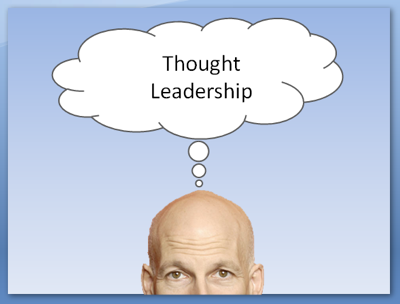Is your thought leadership strategy as solid as a rock? Let's get real—having a strategy…
Some Thoughts on Thought Leadership Marketing
You’re an author or thought leader (or aspire to be one); you’ve got a model, a message, a methodology that you’ve developed and you’re thinking about ways to market your services, solutions or products…now what? Where do you start? What is the most effective way for a thought leader to market themselves? Write another book? Hire a PR firm? Develop a product road map? Probably not. The least expensive and most powerful way to do so is to develop a thought leadership marketing program. It isn’t particularly difficult, but it does take discipline and focus.
So where do you start? The first thing to do is make sure you have clearly defined your target market or markets. With as much specificity as you can, you need to understand whom your content will resonate with and why you’ve got a better mousetrap than the current options in the marketplace. You need to be able to clearly articulate the promise that your work is inherently making to them. What is it that they will be able to do, think, act or behave in a different way as a result of consuming your content? How do those things impact business results in a measurable and sustainable way?
The next step is to do some research and figure out where your market gets their information. This is a long tail exercise for most. You need to figure out what blogs they read, where they are in the social media world, the associations they belong to, the events they attend, the trade and industry publications they read and the authors they follow. Then you need to understand how they consume content – Articles? Videos? Webcasts? Podcasts?
Now you need to take an inventory of your content. What I mean by this is to create a library of your work and note the format that it currently exists. Converting your work from one format to another (i.e. a blog post to a video) is typically a better way to leverage your content than to constantly create original content from scratch. Take note of the gaps that you may have and allocate the time to close the format gaps.
Next you’ll need to create some outreach material. You’ll be offering your content to bloggers and editors and you need to make a solid case as to why your work is relevant to their followers and readers. Your objective is to get your work out into the market place. Their objective is to meet the needs and to provide benefit to their members and readers. Finding alignment will require you to be creative and thoughtful in your outreach.
Now that you’ve got all the pieces in place it is time to execute your thought leadership marketing campaign. Ultimately it is a combination of PR activity, marketing activity, branding activity and lead generation. You may need additional assistance to oversee the execution and the necessary follow up – the specifics for everyone will vary. The point is to develop a strategy, align the resources you have against your target market and consistently use your work and your content as your primary marketing tool. A robust thought leadership marketing program will get your message out to those who can become clients and customers, strengthen your brand and generate quantifiable results.
Comments (4)
Comments are closed.






Will simply and rightly written, Peter. TL continues to remain one of the most powerful marketing weapon in any business’ armoury & content is the driving force behind it. TL content is not difficult to create, but it must pass some tests to be termed TL worthy (http://blogs.prayag.com/marketing/thought-leadership-revisited/) That said, any good TL content must reach the desired audience too.
@PrayagBangalore on Twitter.
Would you suggest that it’s better to start with a goal of 10 true fans to make sure you are really “dialed in” to your market?
Hey there,
This was a great, quick read with a lot of valuable pointers. I completely agree that we need to start by defining exactly who we are trying to target and that we have to provide benefit and meet needs. When I create content, I do the following, in order to achieve my readers needs are met.
I keep customers in the buying part of their brain. This is specifically vital when using methods of indirect marketing and advertising, such as web sites, an advertising item, e-mail blast, social websites or article. Produce content that is so excellent it will become ‘forward-able,’ meaning it is so great, readers are going to forward it to friends or business associates that may become potential customers. This can reduce several of the pressures a consumer feels when ‘being sold’ on a product or business.
Thanks again for an awesome read,
‘TC’ Teresa Clark
To expand a bit on Avi’s point, it’s important to have one’s marketing program reality-based, as in, based on real people. I find that in keeping my content focused on the people I need to reach, it’s important to base my avatars or personas on people I actually know. For example, one of my target markets is the head of a professional services firm, and in my mind that’s “Bryan,” named after the real actual leader of a midsized firm who was a long-term client. I suggest that you try thinking of actual people to represent your target markets — it’ll help you build a good image of their hopes, dreams and fears — and how your service fits into that.
Any thoughts on how to choose avatars that are most important in helping you build your business?